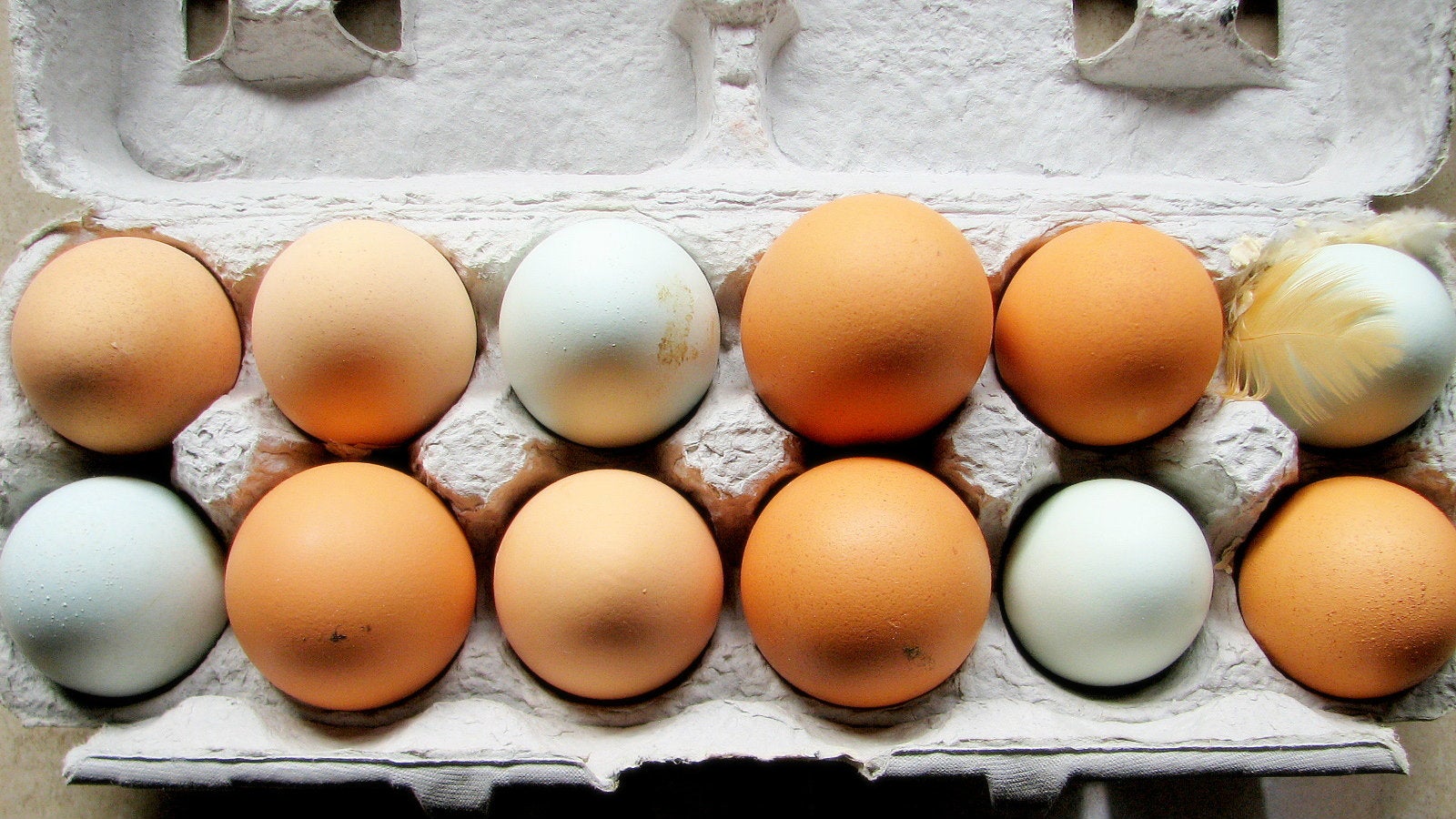Here’s why your brown eggs have more blood spots than white ones
It has probably happened in your kitchen, especially if you have a preference for brown eggs. You put your pan on the stove, add some oil, crack the egg, and drop it into the pan. And then you see it: a dash of red blood across the yolk.


It has probably happened in your kitchen, especially if you have a preference for brown eggs. You put your pan on the stove, add some oil, crack the egg, and drop it into the pan. And then you see it: a dash of red blood across the yolk.
To eat or not to eat? Can you remove the blood spot and continue making your breakfast? Or must you start over and hope that the next egg is blemish-free?
The spots—which are generally harmless—are not, as is commonly thought, an indication of a fertilized egg, but rather are a result of a blood vessel in the chicken’s reproductive tract rupturing during the egg formation process. Meat spots, the brown or gray spots which occur in about 3% to 30% of eggs, are pieces of tissue. (Both kinds of spots are frequently referred to as ”an error on the part of the hen,” but blaming the hen seems a little unfair.) In the US, eggs with blood spots larger than an eighth of an inch in diameter are graded “inedible” under federal regulations, and shouldn’t end up in your fridge.
But even a tiny streak of blood in your sunny-side-up egg is disconcerting. And you might find yourself wondering, why does this keep happening, even when you’ve gone out of your way to buy brown, organic eggs?
Well, for one thing, blood spots are more common in brown eggs than white eggs, for various reasons. Eggs produced on a large scale are all “candled,” says Theresia Lavergne, professor and poultry extension specialist at Louisiana State University AgCenter. That means a light is shone through them while a person or piece of machinery checks for spots. Later, an inspector will also spot check some of the eggs.
In white eggs, less than 1% tend to have blood spots on the yolks, says Neil O’Sullivan, director of research and development at Hy-Line, a major international chicken breeding company. Rates for brown eggs vary but are much higher. The company’s Hy-Line Brown, which O’Sullivan says has the lowest incidence, is still at 5%.
Some consumers prefer brown eggs, even though there’s no nutritional or qualitative difference between brown and white eggs. But while commercially produced brown eggs are also candled, the dark shell makes it harder to see the spots, Lavergne explains. And small producers, whether selling to the grocery store or direct to consumers at farmers markets, often don’t candle their eggs, whether they’re brown or white.
Blood spots are also more likely to occur in eggs from birds of “heavier breeds,” says Craig Coufal, associate professor and extension specialist at Texas A&M University Agriculture & Life Sciences Department of Poultry Science. “All brown egg breeds are heavier than a White Leghorn layer,” he told Quartz in an email, referring to the most common egg-laying hen breed in the US.
How the chickens are raised also contributes to blood spot incidence, making blood spots more likely in organic eggs and those from free-range hens. For organic brown eggs, says David Bruce, President of the Board of the Organic Egg Farmers of America, the feed may be playing a role. For cost reasons, some organic egg producers rely more on small grains like oats and barley, which are less expensive than corn. A diet made up of a lot of small grains, says Bruce, can cause blood spots. Plus, hens laying organic eggs can range outside, and are therefore exposed to changing temperatures, says O’Sullivan. That ”could potentially elevate the incidence of blood spots in these production systems.”
Eggs with spots are usually, but not always, fit for human consumption. “You’ll definitely know the ones that should not be eaten,” says Lavergne, referring to the larger spots or those that diffuse into the white. The small spots are easy to remove with a knife and if you miss one, no biggie, Lavergne says: It’s “a little extra drop of protein.”
The featured photo was shared by Anathea Utley under a Creative Commons license on Flickr. It has been cropped.